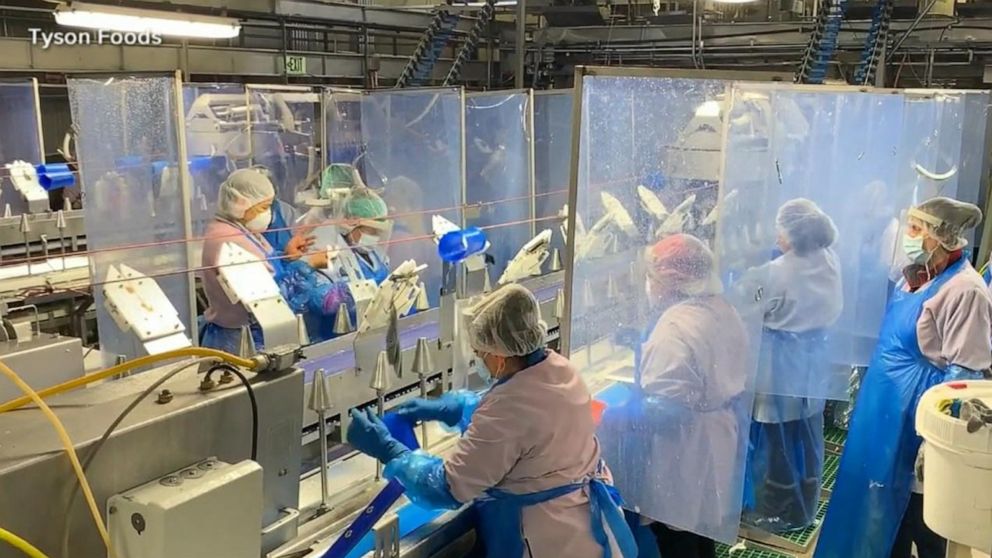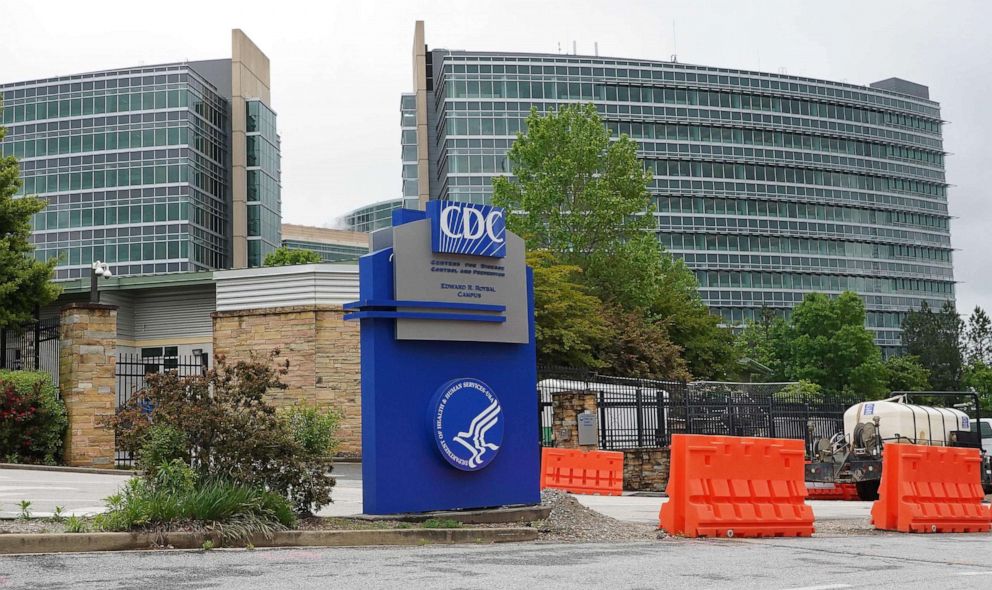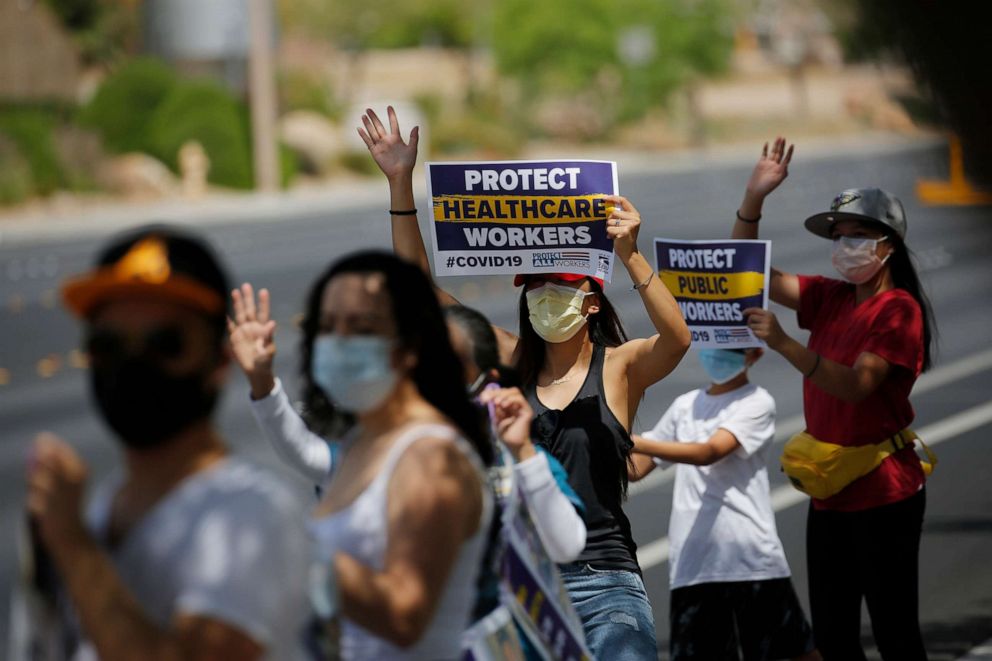As businesses look to reopen, Democrats and advocates want more rules to protect workers
Workers’ rights advocates say companies and the government are not doing enough.
Bus and taxi drivers ferrying sick passengers. Warehouse workers without enough time to wash their hands. Meat plant workers crammed side-by-side along a fast-moving production line.
As states consider reopening and Americans head back to work in a time of COVID-19, a key question has emerged: Whose responsibility is it to protect the American worker?
There is no federal mandate in place to prevent the transmission of airborne viruses, and politically powerful industries like meat processing plants aren’t operating under any federal requirements, only voluntary guidance.
Democrats and advocates say the federal agency in charge of worker safety – the Occupational Safety and Health Association, or OSHA -- has been silent since the pandemic began, leaving it up to health officials to offer voluntary guidance to the nation’s employers. And they want OSHA to step it up.

The Trump administration and business leaders have said there is no one-size-fits-all solution for the American workplace, and officials warn against imposing stringent rules that they fear would hamper a company’s recovery and open the door to frivolous lawsuits. But Democrats and workers’ rights groups are sounding the alarms on what they say are dangerous work conditions and pitching legislation they say is needed to keep workers safe from catching the virus.
“COVID-19 has become a massive worker safety crisis,” said David Michaels, the former director of the Occupational Safety and Health Administration, the federal agency tasked with setting national standards for worker safety.
Michaels, who also is an epidemiology professor at George Washington University and led the agency under the Obama administration, says the idea of worker safety isn’t a luxury either. Getting it wrong could hurt the recovery effort, he said.
“Worker safety is the fulcrum which has been determined whether or not we can open up the economy safely or if we’ll have thousands more deaths and have to close it back up again,” Michaels told ABC News.

A push for more
OSHA says a new regulation isn’t necessary to protect workers from coronavirus because existing health and safety standards should be enough.
“Since the outbreak of the coronavirus, OSHA has been taking swift and decisive action to protect America’s workers,” a Labor Department spokesperson said in a statement.
“Under existing OSHA rules and requirements, employers have a duty to protect employees who are exposed to coronavirus at work,” a Labor Department spokesperson said in a statement.
OSHA has issued guidance to help employers prepare offices to reopen, and for specific industries like health care, construction, and meat packing. The agency also issued several directives to deal with the shortage of personal protective equipment around the country, including how to deal with complaints against employers if they can demonstrate they made an effort to acquire PPE.
OSHA has received more than 3,700 COVID-related complaints since February and has 272 pending federal inspections, but no citations have been issued yet.
“The agency is diligently working every day to help employers understand and meet those obligations. Where employers fail to take the steps needed to protect workers from known risks, OSHA has the enforcement tools to respond as appropriate,” the spokesperson said.
But lawmakers are pushing for more – In the HEROES Act introduced by the House earlier this week, OSHA would have to enact a temporary emergency standard, which would require employers to put in place protections based on Center for Disease Control recommendations aimed at protecting workers from exposure to the virus on the job.
Senate leaders, like Sen. Patty Murray, ranking member of the Health, Education, Labor, and Pensions committee, say it has already taken the administration too long to issue directives for businesses as part of its “Opening Up America Again” plan.
“We need to make sure that industries across the country know how to safely reopen and that people know their workplace is safe,” Murray said in a hearing on Tuesday, going on to condemn Labor Secretary Eugene Scalia for “dragging his feet” on making a rule that sets clear worker safety standards

Experts say guidance alone is not enough
Workers’ rights advocates and labor unions have also advocated for an enforceable standard to protect workers, citing examples like meat processing facilities where conditions make it difficult to follow social distancing guidelines and outbreaks have continued to spread despite guidance from CDC and OSHA.
“This isn’t just about infection control, which is how the CDC looks at it, this is about exposure assessment,” said Rebecca Reindel, safety and health specialist with the labor organization AFL-CIO. “You look at how people are exposed. Your main source of exposure is other people and so where you’re mainly running into other people right now is the workplace.”

Michaels, of George Washington University, said the thousands of workers in meat packing plants who have become sick is an example of why guidance alone is not enough.
“Those companies knew those suggestions were out there and they ignored them. What we need to see is an emergency standard that says every employer has to develop a plan to protect workers from this exposure,” he said in an interview on ABC News Live.
Rebecca Dixon, the executive director of the National Employment Law Project, a worker safety advocacy group, testified Tuesday before the Senate that the most effective step the administration could take would be to enact an enforceable OSHA standard.
“Aided and abetted by OSHA which is all but absent these days, employers have needlessly exposed workers to COVID-19,” Dixon told lawmakers in a hearing of the Senate Judiciary Committee.
“Because of structurally racist policy choices in labor, health, and economic systems – Black, Latinx, Indigenous, and other communities of color are disproportionately affected by layoffs, infection, and fatalities related to the pandemic,” she said.
And Debbie Berkowitz, worker safety and health program director for NELP, said that if the administration doesn’t step in with stricter standards and more enforcement many Americans will be vulnerable when they return to work.
“It is up to the employer and workers are on their own. For the first time since the OSHA law was created,” said Berkowitz, who also worked as OSHA’s senior policy advisor under President Barack Obama.
She added “It's like the agency doesn't exist.”






